Founded in 1955 as the European Champions Clubs' Cup, the Champions League is Europe's most prestigious football competition.
This season, the Red and Blue will be facing Dortmund, AC Milan and Newcastle, within one of the most prestigious group.
The classic format of this competition is divided into two phases: the 32 team s are first divided into 8 groups of four within which the clubs meet in round- trip matches in the form of a mini championship. The first two teams in the group qualify for the round of 16 of the competition, while the third team is sent to the Europa League. This is followed by a knockout phase in which the clubs play each other in 1/8, 1/4 and ½ finals in home and away matches. As for the final, it is played in a single match.
The history of the competition is closely linked to emblematic clubs such as AS Saint-Étienne,Stade de Reims, FC Nantes, Olympique de Marseille or more recently Paris Saint-Germain, giving place to many derbies and other classics of the French championship: the most beautiful match of the weekend is play ed on Sunday evening at 20:45.
Only clubs that have won the competit ion 5 times or 3 times in a row are entitle d to keep the trophy permanently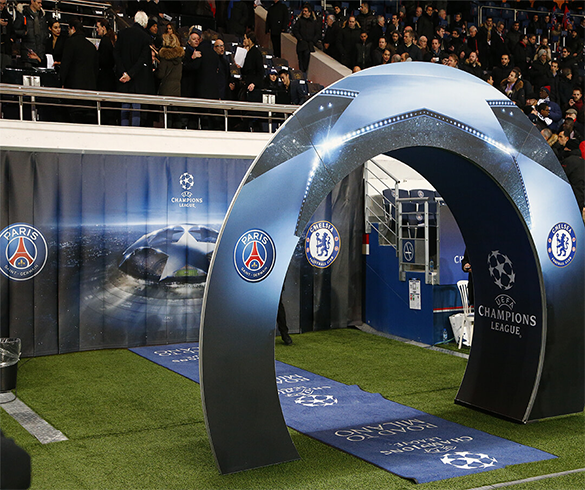
The Champions League will know a new functioning of its competition followi ng the reform announced by the UEFA which will be put in force from the edit ion 2024/25. This reform, implemented in particular with a view to counter the European SuperLeague project, provides for the format to be changed fr om 32 to 36 clubs who will be in the same group to play a kind of champions hip with 36 teams. Each club will face 8 different opponents drawn at random during this first phase of the competition. At the end of this championship, the first 8 will be directly qualified for the 1/8, while the last 8 will be eliminated. The clubs between the 9th and 24th positions will have to compete in play- offs to hope reaching the knockout stage, which will operate on the same principle as the current format.
This new format will also apply to the two other UEFA competitions: the Europa League and the Europa Conference League.
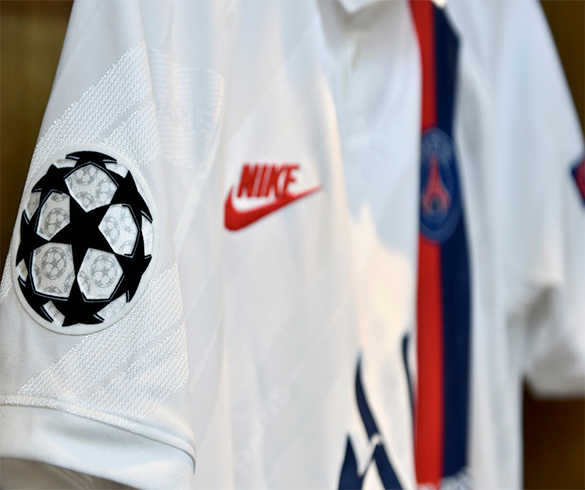
Broadcast in almost every country in the world, the Champions League is eve ry year one of the most watched sports events on the planet. Its final has alre ady gathered nearly 340 million European, American, African and Asian view ers, all sharing the same fervor for this unique competition. This competition, founded in 1955, represents a lot for the participating clubs, beyond the simp le sporting and prestigious aspect that it arouses.
A participation in the Champions League represents a major financial stake for the qualified clubs. From TV rights, ticketing, participation and performan ce bonuses to matchday revenues, a Champions League campaign brings in millions for the participating clubs. These revenues can be a great asset in the construction of a mercato budget during the transfer period, especially for clubs in full development.
Beyond the financial power that a participation in the Champions League brin gs, the competition offers a strong attractiveness to the clubs that are enga ged in it. Visibility, prestige and top matches, all the elements that a football player would like to experience in his career are combined in this same com petition. The clubs that qualify for the Champions League have a decisive advantage in attracting the world's biggest stars, international players or futu re talent of European soccer to their ranks.
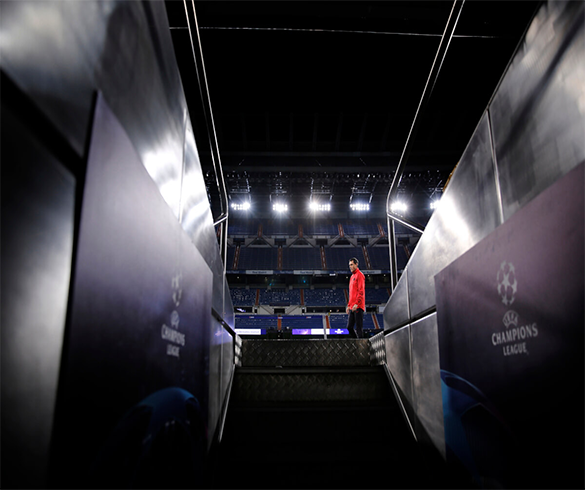
Participation in the Champions League also means exposure to the 5 contin ents. It is when the UEFA anthem resounds, which has become mythical over the years, that clubs can give themselves the opportunity to showcase them selves and shine on the European stage... watched by fans from all over the w orld. When a club performs well in the Champions League, its whole instituti on is impacted. Its brand image is enhanced, its notoriety improved, and this is how clubs build powerful sporting identities becoming brands remaining over time.
This is the case of Real Madrid, FC Barcelona or Manchester United, whose C1 victories have been echoed throughout the world and have resulted in the co nstruction of communities that go far beyond the borders of their countries. These fans are at the origin of the numerous sales of shirts, merchandising and television rights and constitute the very value of these sports entities. Today, the biggest European clubs playing in C1 compete with the great Ame rican sports franchises such as the New Yorks Yankees (MLB), the Dallas Cob oys (NFL), or the New York Knicks (NBA).
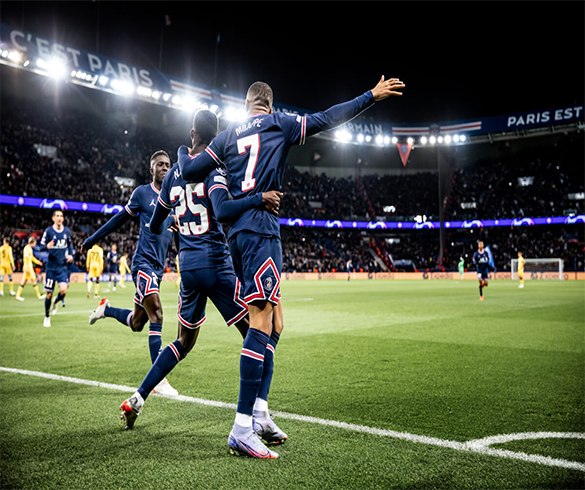
FINAL
2020
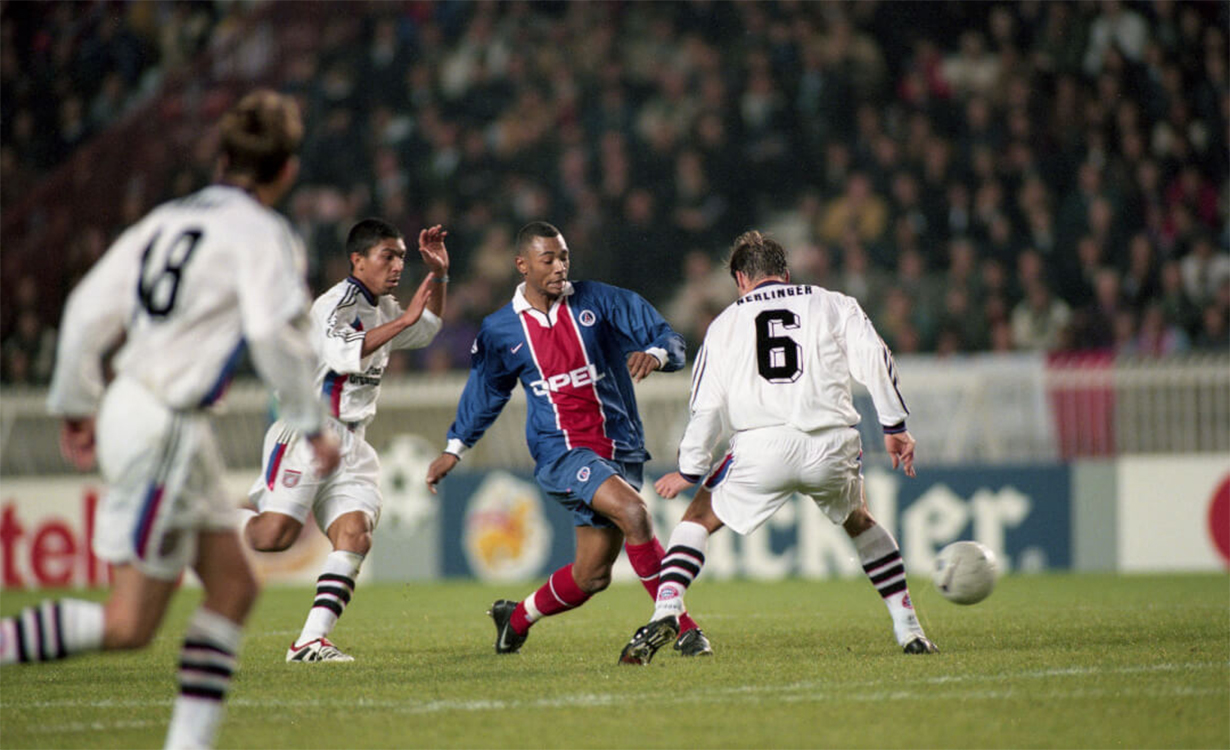
In the post-war years, professional soccer in Europe was reduced to the existence of national championships and prestigious midweek friendlies. Some competitions between Western European clubs (Latin Cup) and Central European clubs (Mitropa Cup) were played at that time but no competition between the best clubs of the continent existed yet.
In 1954, when the English club Wolverhampton was crowned champion of England, it met Racing of Avellaneda, Spartak Moscow and Bud apest Honvéd in friendly matches between world clubs. Wolves were far from the favorites, but they managed to beat all three teams and the Daily Mail declared Wolverhampton "World Club Champions".
Gabriel Hanot, editor-in-chief of the newspaper L'Equipe at the time, responded by pointing out to the English press and to the whole of Europe the presence of many prestigious clubs such as Real Madrid or AC Milan capable of competing with Wolves. Under the impulse of the French daily newspaper, a project of European Interclub Cup was launched, which met with positive reactions throughout Europe. On February 3, 1955, the newspaper L'Equipe unveiled the list of 16 clubs invited to compete in the first edition of this competition.
While the organization of this European interclub competition was intended for the newspaper l'Equipe, FIFA finally pushed the Union of European Football Associations (UEFA), founded only one year earlier, to take over the organization of this competition. On September 4, 1955, Sporting Portugal hosted the Yugoslavian team Patizan Belgrade in Lisbon in front of 30,000 spectators curious to discover this new competition and their European neighbors. This was the birth of the European Champion Clubs' Cup. A few months later, the final of the first edition was held between Di Stefano's Real Madrid and Raymond Kopa's Stade de Reims. That evening in June 1956, the Madrid club became the first club in history to win the C1 with a 4-3 victory at the Parc des Princes.
Real Madrid are the most successful club in the history of the competition with 14 trophies wonThe first edition of the competition was a real success and UEFA imposed tha t only the winners of European championships should be allowed to take part in the next edition. English clubs did not take part in the first edition, but the following year the Red Devils of Manchester United joined the competition. In the following years, more and more teams were invited to take part in the European Champion Clubs' Cup. French clubs such as OGC Nice and then ASSE, AS Monaco and FC Nantes took their turn in the competition. It was only a few years after its creation that clubs such as Barcelona, Juventus and Inter Milan made their appearance in the competition, which had only one re presentative per country.
More than 35 years after its creation in 1955, the 38th edition of the UEFA Champions League, in 1992/93, marked a real turning point in the history of this prestigious competition. The historic European Champion Clubs' Cup would henceforth be known as the Champions League and the UEFA anthem composed by Tony Britten would be played for the first time in a European stadium. The group stages were introduced in the previous edition, replacing the lifelong quarter- and semi-finals. In that first UEFA Champions League, Olympique de Marseille beat AC Milan 1-0 at the Stadion Olimpico in Munich to become the first French club to win the most prestigious competition.
The lyrics of the C1 anthem mix English, French and German, the three official languages of UEFA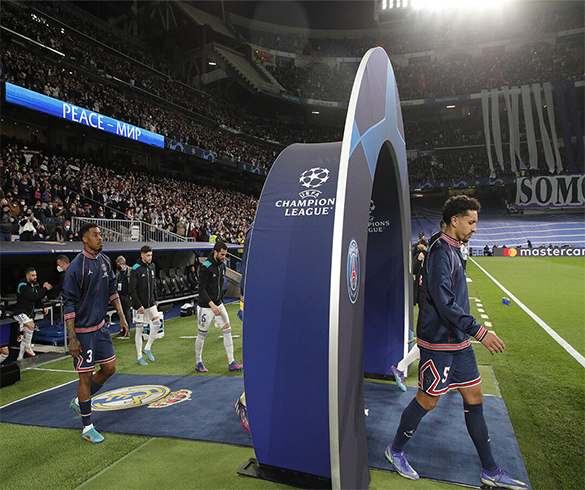
The 2019/20 edition was and will remain a unique edition in the history of the Champions League. Despite the particular health context, a Final 8 is organised in Lisbon to determine a winner among the 8 teams that will face each other in a knockout match. After an epic quarter-final where PSG overturned Atalanta Bergamo in the last minutes of the game, Neymar and Mbappé's teammates faced Leipzig to try to offer the club from the capital, a first final in its history in the most prestigious of competitions.
TOP